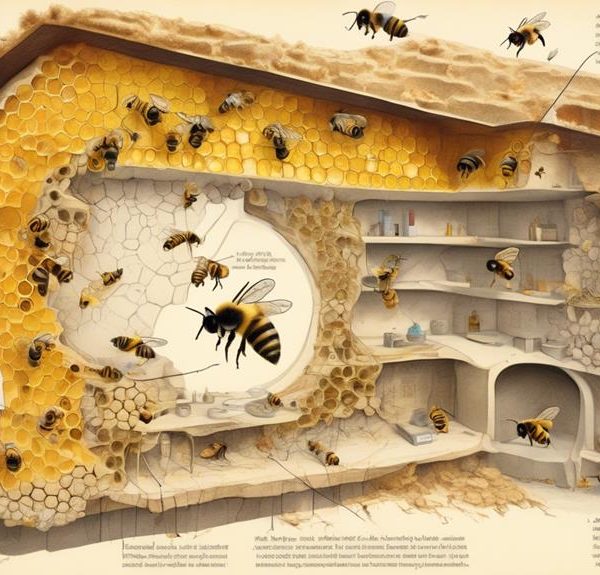Gain insights on safely evicting bees from your yard without harming the environment, in our comprehensive guide.

How to Get Bees Out of Your Yard?
Dealing with bees in your yard can be as tricky as navigating a maze in the dark. You're aware of the buzzing nuisance, you've got occasional stings to prove it, and you're ready to reclaim your outdoor space. But where do you start?
Identifying the type of bees you're dealing with, understanding their behavior, and knowing the right techniques to remove them safely are critical steps you can't afford to overlook. And while you might be tempted to handle it yourself, there's more to it than meets the eye.
If you're intrigued to find out more about how to execute this delicate task without causing harm to yourself or the environment, then stick around.
Key Takeaways
- Bees are attracted to gardens for food and shelter, so minimizing bee attractions in your yard can help deter them.
- Differentiate between types of bees for appropriate removal techniques, as honeybees are docile while wasps can be more aggressive.
- Natural bee repellent methods include planting bee-repelling flora, using vinegar sprays in bee-active areas, and covering food and drinks to reduce bee attraction.
- If the problem persists, it is recommended to hire a professional bee removal service for safe and effective management of bee populations.
Understanding Bee Behavior
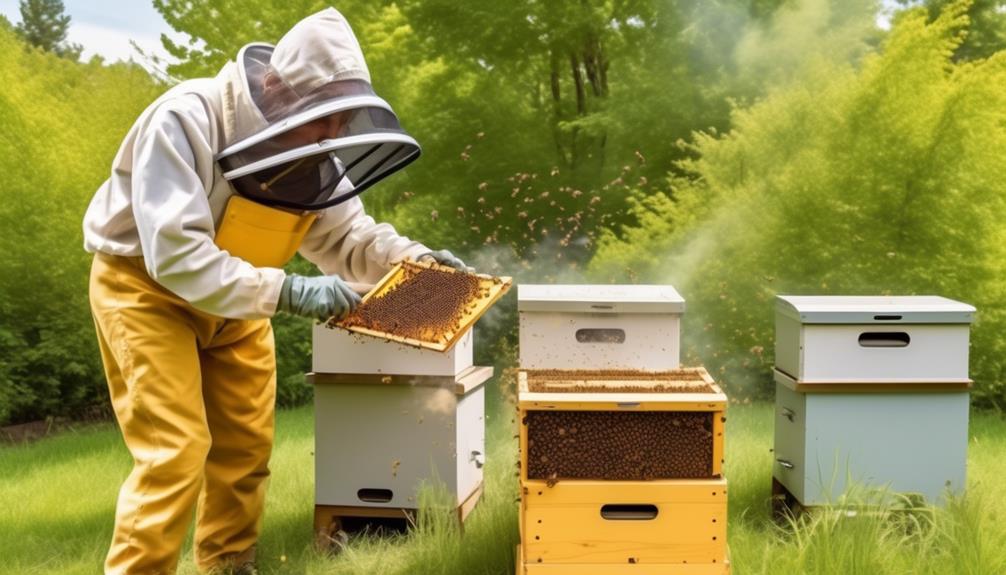
To effectively manage bees in your yard, it's crucial to understand their behavior as it can shed light on why they're attracted to your space in the first place. Bees are essentially drawn to gardens for two reasons: food and shelter. They're primarily interested in nectar and pollen, which they gather from flowering plants. If you've got a variety of plants blooming in your yard, you're essentially setting out a bee buffet.
Take note of the plants they're particularly fond of, as certain types of flowers are more appealing to bees than others. They're attracted to bright colors, particularly blues, purples, and yellows. They also prefer native plants and heirloom varieties, as these generally provide more nectar and pollen than hybrid plants.
Shelter is another major attraction for bees. They nest in a variety of places, depending on the species. Some build hives in trees or under eaves, while others burrow into the ground or into wood.
Identifying Types of Bees
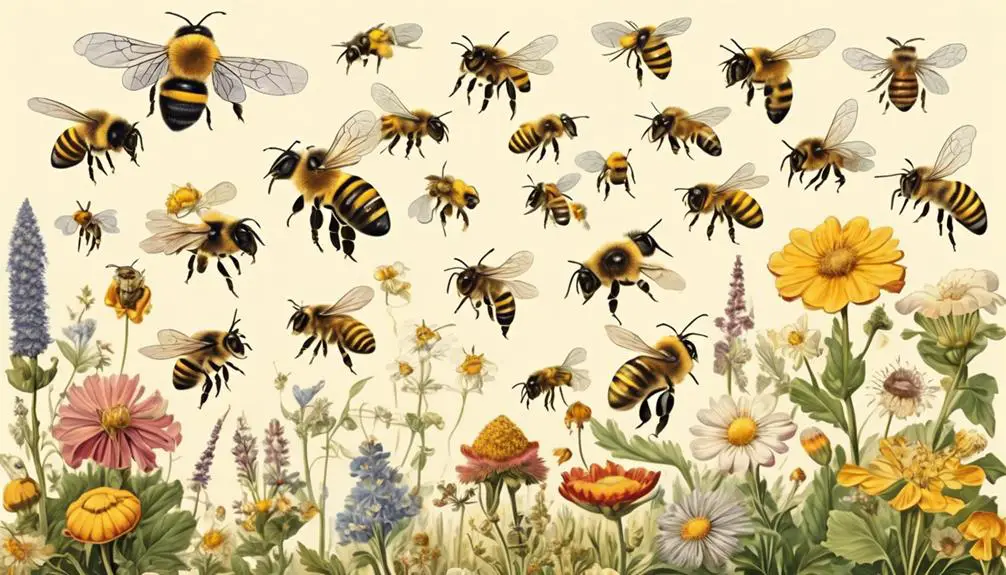
After gaining an understanding of bee behavior, you're better equipped to identify the different types of bees that could be buzzing around your yard. It's crucial to differentiate between them as some are more aggressive than others, and their removal techniques vary.
Honeybees are the most common type. They're generally docile, with a yellow and brown striped body. They play a vital role in pollination, so consider contacting a beekeeper for safe removal.
Bumblebees, larger than honeybees, are black and yellow. They're generally harmless unless provoked. Their nests, usually in the ground or dense grass clumps, should be removed by professionals.
Carpenter bees are large, shiny, and black. They burrow into wood to lay their eggs, which can cause structural damage. If spotted, it's best to call pest control.
Lastly, wasps, including yellow jackets and hornets, are often mistaken for bees. They're more aggressive, and their nests should never be approached without professional help.
Natural Bee Repellent Methods

You'll find a plethora of natural bee repellent methods that can effectively deter these buzzing creatures from your yard without causing harm. Creating a less inviting environment for bees is the first step. Bees are attracted to sweet smells, so minimize these in your outdoor space. Cover food and drinks during outdoor activities and promptly clean up any spills.
Another environmentally friendly method is planting bee-repelling flora. Mint, citronella, and lemongrass are just a few examples of plants that bees tend to avoid. Not only will these add beauty to your yard, but they'll also serve a functional purpose.
A vinegar spray can also deter bees. Mix equal parts water and vinegar in a spray bottle and apply it to areas where you've noticed bee activity. However, remember not to spray bees directly as this could provoke them.
Professional Bee Removal Services
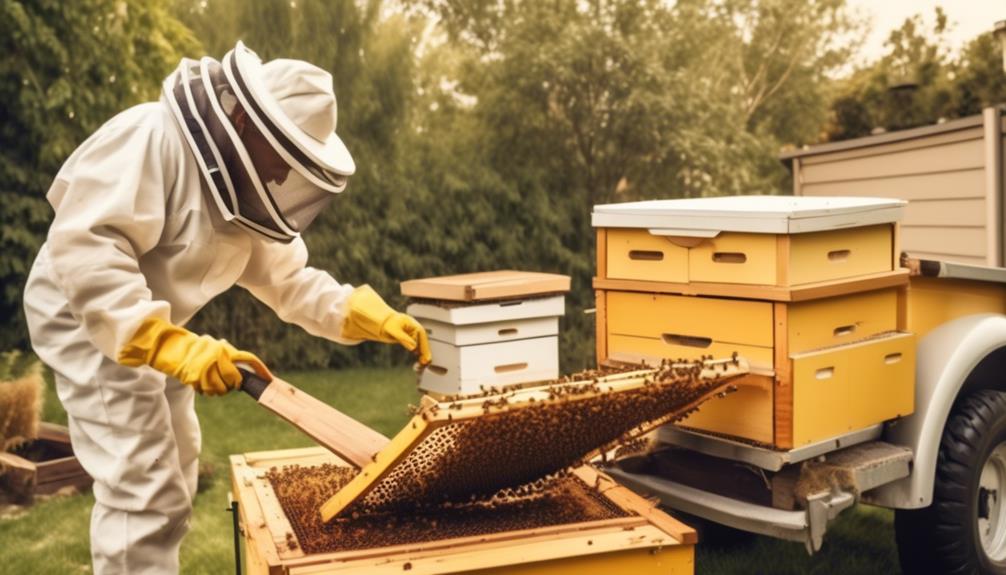
If natural methods aren't doing the trick, it's worth considering professional bee removal services to safely and effectively manage the bee population in your yard. These experts understand the intricate behavior of bees, have the right tools and equipment, and are trained to remove bees without causing harm to them or to you.
Now, you might be wondering, 'What exactly does a professional bee removal service do?' Well, they conduct a thorough inspection of your property to identify the type and extent of the bee problem. Whether it's a minor infestation or a complex hive, they can handle it. After the initial assessment, they devise a removal plan tailored to your specific situation. The removal not only involves the bees but also the hive, ensuring that no bees return.
Additionally, professional services often offer preventative measures to keep bees from coming back. This could include sealing potential entry points or applying eco-friendly repellents. Remember, while it might seem cost-effective to handle bee removal yourself, it's safer and more beneficial in the long run to hire professionals. They not only take care of the current problem but also help prevent future bee-related issues.
Maintaining a Bee-Free Yard
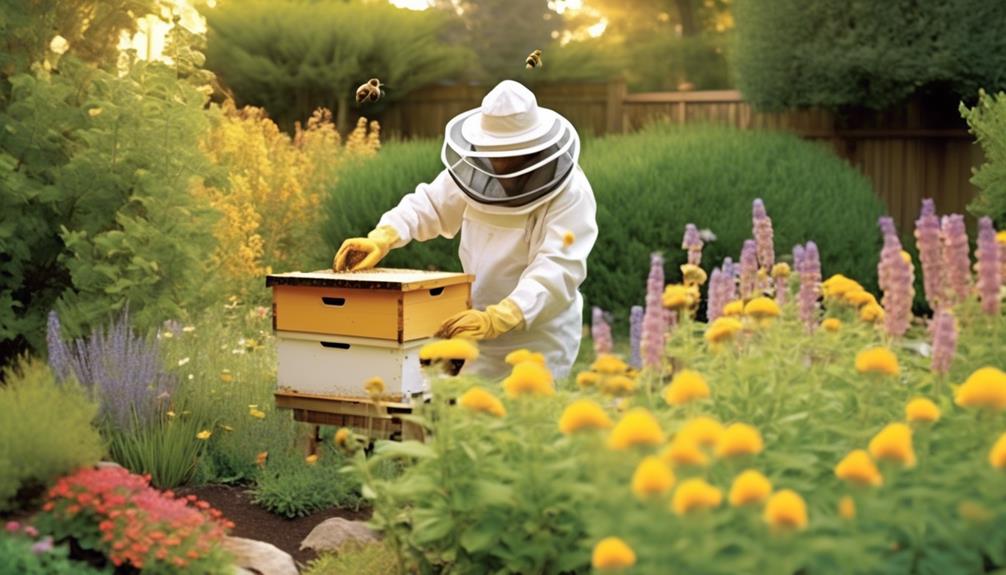
Maintaining a bee-free yard involves a few key steps and precautions to ensure these buzzing guests don't make a recurring appearance.
First, limit the attractions in your yard. Bees are attracted to specific plants and flowers, so it's smart to research and avoid planting those that will draw them in. You can consult with a local horticulturist or extension service for advice tailored to your region.
Second, maintain a clean yard. Bees often find food sources in discarded food and drink containers. Regularly clean any outdoor eating areas and tightly seal garbage cans to deter them. Additionally, fill in any holes or cracks in the ground where bees could potentially build a nest.
Third, consider using a natural bee repellent. Many options, such as essential oils and vinegar, are available that can deter bees without harming them or the environment.
Lastly, if you have a recurring bee problem, hiring a professional pest control service may be necessary. They can provide a more permanent solution by treating your yard to prevent future bee invasions.
Frequently Asked Questions
What Are the Potential Health Risks Associated With Bee Stings?
Bee stings can cause various health risks for you. Initially, you'll experience pain, swelling, and redness.
However, if you're allergic, you could have a severe reaction called anaphylaxis that includes difficulty breathing, hives, and a fast heartbeat. It's critical to seek immediate medical attention if this happens.
Even if you're not allergic, multiple stings can lead to toxicity and result in dizziness, nausea, and seizures.
Can Bees Cause Structural Damage to Property?
Yes, bees can cause structural damage to your property. They're notorious for building hives in walls, roofs, and other areas of buildings. If left unchecked, the weight of a large hive can cause physical damage.
Also, honey and wax from the hive can seep into and stain walls or ceilings. It's important to remove bee infestations promptly to prevent this type of damage.
How Can Bees Affect Pets or Local Wildlife?
Bees can indeed affect your pets and local wildlife. They're known to sting when threatened, which can cause painful, swelling reactions in your pets. In some cases, multiple stings can even lead to serious health issues.
For local wildlife, bees play a critical role in pollination. But, they can also pose a threat if animals disturb their hives. It's important to be aware of bees in your environment and manage their presence responsibly.
Are There Any Legal Considerations When Attempting to Remove Bees From My Yard?
Yes, there can be legal considerations when you're trying to remove bees from your property. Certain species of bees are protected, meaning you can't legally kill them.
Also, depending on where you live, there may be local ordinances regarding bee removal. It's important to do your research and possibly consult with a local pest control service or wildlife agency to ensure you're not breaking any laws in your efforts to remove the bees.
What Can I Do if I Am Allergic to Bees and I Find Them in My Yard?
If you're allergic to bees and discover them in your area, don't panic. You shouldn't try removing them yourself. It's risky and may lead to stings.
Instead, contact a local beekeeper or pest control service. They've the expertise to safely relocate the bees without causing harm.
Meanwhile, avoid wearing bright colors or strong scents that attract bees. It's also crucial to keep food and drinks covered when outdoors.
Conclusion
In conclusion, understanding bee behavior, identifying their species, using natural repellents, and considering professional removal services are all effective methods to clear your yard of bees.
It's crucial to maintain a bee-free yard, not just for your safety, but also for a peaceful outdoor experience. Remember, bees are beneficial for the ecosystem, so always opt for humane methods.
Knowledge is power, so use these tips to take control of your yard again.


